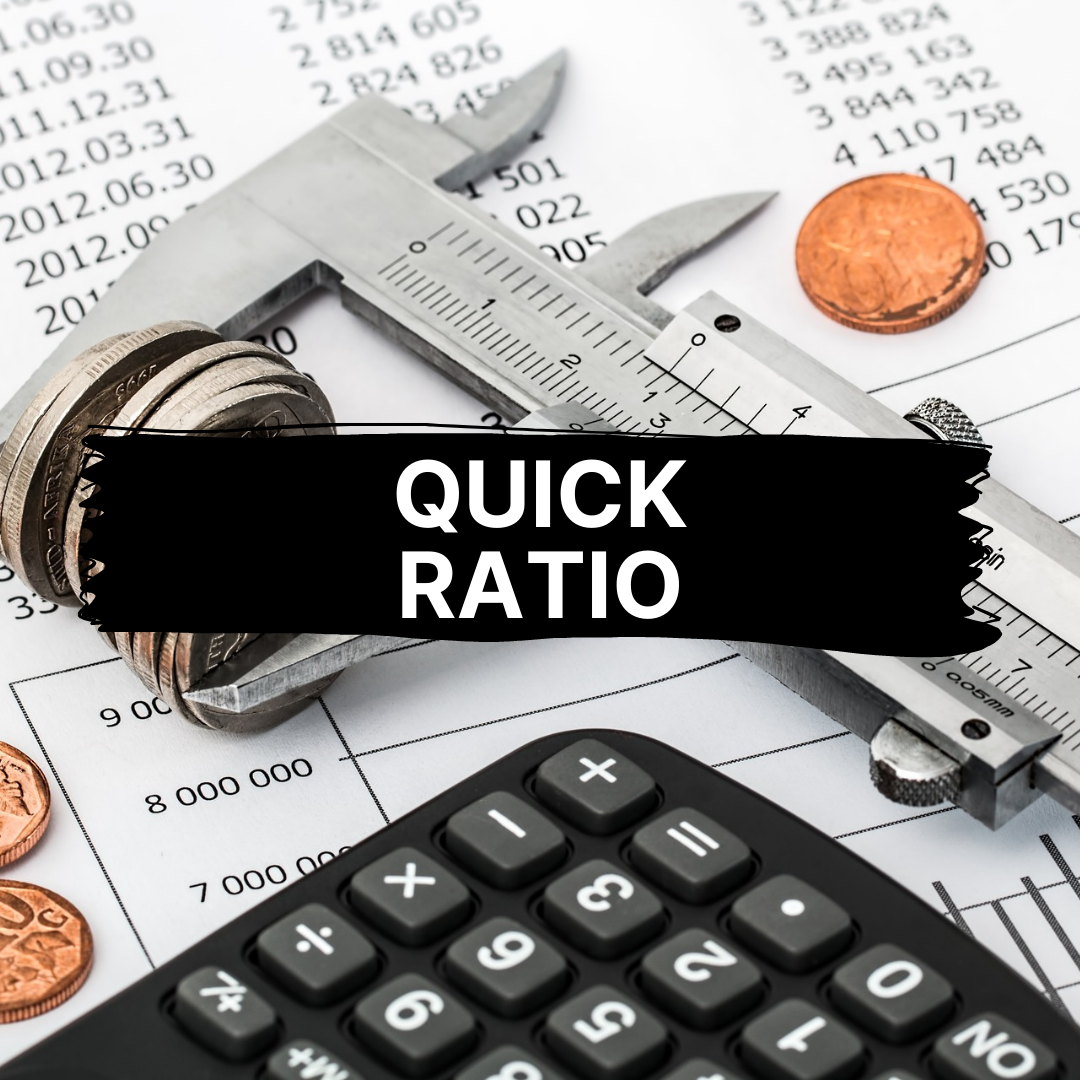Net Profit Ratio, also called Net Profit Margin or Net Profitability Ratio, is one of the most important metrics to measure a business's profitability and financial success. It is the ratio of net profits to the total sales (or revenue) of the company for a given period and is expressed as a percentage.
In essence, the Net Profit Ratio expresses how much profit is generated for every $1 that is made in sales. If the Net Profit Ratio is 30%, it means 30% of every dollar, or 30 cents is profit. It also gives a measure of the company's expenditure for every dollar earned, which in this case is 70% or 70 cents. Clearly, the larger the Net Profit Ratio, the better.
The Net Profit Ratio gives a measure of a company's capability to keep expenses under control. It evaluates how efficiently (or inefficiently) a company is spending money.
The Net Profit Ratio represents final company performance. It positions the company as a profitable one, or not. Consequently, the Net Profit Ratio can help a business improve efficiency for the coming year.
By understanding how much the company is spending to make a dollar, they put a tangible value to expenditure that they can start to control and reduce by reducing outgoing amounts like the cost of goods sold, for example.
In this article, we cover in-depth everything you need to know about Net Profit Ratio, how to differentiate it from other profitability ratios, how to calculate it, and how to draw insights from it. We talk about:
- Types of Profitability Ratio
- Return on Equity
- Earnings Per Share
- Dividend Per Share
- Price Earnings Ratio
- Return on Capital Employed
- Return on Assets
- Gross Profit Ratio
- Net Profit Ratio
- Difference Between Net Profit and Gross Profit
- Net Profitability From Net Profits
- Measuring Net Profitability
- What Is Considered A Good Net Profit Ratio & How To Improve It
- Limitations of Net Profit Ratio
Types of Profitability Ratio
Before we move into understanding the Net Profit Ratio, it is important to get a basic understanding of the types of profitability ratios that are calculated for every company.
Return on Equity
The return on equity ratio represents the profitability of the equity fund that is invested in the company. It measures the profits generated from the investments made by shareholders. It is calculated by dividing the company profits after tax by the net worth, where the net worth is the sum of investments (equity share capital, reserve, and surplus).
Formula:
Equity = Profit after Tax ÷ Net worth (sum of investments)
Earnings Per Share
The earning per share ratio is a measure of profitability per outstanding share of common stock of the company. It represents the company's profitability from the point of view of an ordinary shareholder. It is calculated by dividing net profit by the total no of shares outstanding.
Formula:
Earning Per Share = Net Profit ÷ Total no of shares outstanding
Dividend Per Share
The dividend per share ratio measures the amount of dividend disbursed by the company to its shareholders per outstanding share. A high ratio is indicative of surplus profits and also indicates a profitable business. it is measured by dividing the total amount disbursed to shareholders by the total number of shares outstanding.
Formula:
Dividend Per Share = Amount Distributed to Shareholders ÷ No of Shares outstanding
Price Earnings Ratio
A company's price to earnings ratio is a measure of its share price to its earnings per share. It indicates to investors if the company's shares are undervalued or overvalued. It also gives investors a sense of the company's earnings, profitability, and payback period to investors.
Formula:
Price Earnings Ratio = Market Price of Share ÷ Earnings per share
Return on Capital Employed
The return on capital employed gives a measure of the company's return percentage for the capital invested. It gives the profitability of the company after taking into account the total capital used. It is the ratio of net profits to capital investment, where the capital investment is generally the investment made for the business to function.
Formula:
Return on Capital Employed = Net Operating Profit ÷ Capital Employed
Return on Assets
Return on assets is a measure of profits per dollar of assets owned. It indicates the company's profitability relative to the total assets owned. It gives a measure of how efficiently the company is using its assets to generate revenue.
Formula:
Return on Assets = Net Profit ÷ Total Assets
Gross Profit Ratio
Gross profit is the total revenue earned by the company less the cost of goods sold, or the cost of providing service. The gross profit ratio is the ratio of gross profits to total sales made.
Formula:
Gross Profit Ratio = Gross Profit ÷ Sales
Net Profit Ratio
Net profits are the profits made by the company after deducting all expenses - cost of goods sold, cost of service, salaries, utilities, taxes, etc. It is calculated by deducting all operating expenses from the gross profit. The ratio of net profit to the total sales done is the net profit ratio.
Formula:
Net Profit Ratio = Net Profit ÷ Sales
Difference Between Net Profit and Gross Profit
A common confusion arises when discussing net profit and gross profit. They are both measures of a company's profits, but they have different calculations and thus different implications.
Assume the following table to be a company's annual income statement:
| Total revenue | $350,000 |
| Cost of goods sold | $75,000 |
| Operating expenses | |
| Payroll | $25,000 |
| Utilities | $10,000 |
| Rent | $15,000 |
| Depreciation | $10,000 |
| Total operating expenses | $60,000 |
A company's gross profits are its profits after deducting the COGS from its revenue. In this example, the company's gross profits are $350,000 - $75,000 = $275,000
A company's net profits are the profits after deducting ALL expenditure from its revenue. In this example, the company's net profits are $350,000 - $75,000 - $60,000 = $215,000. You can also calculate it as the company's gross profits less the total operating expenditure.
Why are there two separate measures of profits, and what are their implications? Understanding that will give you a complete understanding of the difference between the two.
Gross Profit is a measure of how efficiently the company is using its labor force and supplies in order to manufacture goods. The higher the gross profits, the lesser the cost of goods sold, or in other words, the lesser the cost of making goods, which indicates the goods are being manufactured efficiently. Gross profit directly relates products to profits by measuring how much profit is generated by the manufactured goods that were sold.
The gross profits are also a measure of how much funds are available for business operations. the gross profits are used (ideally) to pay operating expenses.
Net profit is a measure of profits earned after deducting all expenses from the total revenue (or after deducting operating expenses from the gross profit). This number indicates the actual surplus money available as profits to the owners of the company.
The net profit is a measure of the company's financial health. A high net profit indicates a business that is earning high revenue and managing it with low expenses. It also shows how much money is available as surplus, and this amount can be used to grow the business and indicates a thriving business.
Net Profitability From Net Profits
Net profitability and net profits are different terminologies. Net profits, discussed in the earlier section, shows how much money is available to the owners as surplus. In the example above, the company had $215,000 available to the owners.
Profitability, on the other hand, is not an absolute monetary value but a relative number, a percentage that measures performance. Net Profitability, therefore, is a measure of how good or bad the net profits have been that year.
Measuring Net Profitability
The formula for net profitability is
Net Profitability = (net profit ÷ net revenue) x 100.
In the example above, net profitability would be (215,000 ÷ 350,000) x 100 = 61.43%
This company is able to create 61% profits from every dollar it earns and expends only 39% of every dollar it earns.
You can now see how profitability is a measure of performance. it does not indicate how much money is available, it indicates how well the company worked towards managing its expenses so it could turn over more profits for every dollar.
What Is Considered A Good Net Profit Ratio & How To Improve It
There's no absolute answer to what is considered a good or bad net profit ratio, it depends on the industry and your company's past performance.
In the retail sector, for example, anything between 0.5% to 3.5% is considered a good net profit ratio. This might not, however, be considered good for other businesses. In general, though, aiming for a net profit ratio of 10% - 20% is considered average. A better measure for your business would be to compare the previous year's net profit ratio and try to improve on it.
If you believe your business has a low net profit ratio or you are not seeing any increase over the years, there are some measured steps you can take to improve it.
1. Increase Revenue - The first and most obvious way to increase the net profit ratio is by increasing revenue. You can do this is in one of three ways - sell the same amount of products but increase the prices of the products, keep the prices of products the same but increase marketing efforts and sell more quantities, or both, increase the pricing and the quantity through marketing.
2. Reduce Cost Of Goods Sold (COGS) - If you're not able to increase revenue, the next area to look at is to increase gross profits by reducing the cost of goods sold. You can achieve this by finding cheaper vendors or cheaper alternatives to the raw materials being used, and by reducing other costs that are included in calculating COGS.
3. Reduce Operating Expenses - The next area you can focus on to increase the Net Profit Ratio is the company operating expenses. There are some expenses like salaries that are rigid and cannot be reduced, but there will also be some expenses that can be reduced or even be totally avoidable. If you're spending on client meals, expensive conference rooms, etc, you can save up by looking for cheaper alternatives.
Limitations of Net Profit Ratio
Measuring net profit profitability ratio and using solely this metric to measure performance is not good practice. Here are a few limitations of doing so:
1. Cannot be used to compare companies
Like we mentioned earlier, the measure of good or bad Net Profit Ratio depends on the industry. If investors were to compare companies solely based on Net Profit Ratios, they would always favor high ticket sales sectors like real estate or jewelry stores than say a local retail store. Net Profit Ratio cannot be used as a measure of comparing companies.
2. Can be inflated
Net profit ratio can be manipulated by one-time earnings like through a sale of an asset. This would show up on the balance sheet as an earning and boost profits for that period resulting in a high Net Profit Ratio. While it is a good measure of company performance, it should not be the only measure because of reasons like this. Analysts should take into account other ratios as well when evaluating a company's financial status.
3. Is low for companies with debt
A company that has debt financing will have higher interests on their balance sheet and this will increase operating costs, thereby lowering the net profit ratio. This can become an unfair disadvantage if the company were to apply for funding and investors only analyzed net profit ratio.
4. Depreciation expenses affect the net profit ratio
Similar to companies with debt, companies with high property plant & equipment (PP&E) assets will record higher depreciation on their balance sheet which will increase operating costs and lower net profit ratio. This, again, is an unfair method of evaluating the company.
Conclusion
Net profit ratio is an important metric that every financial analyst and company founder should know, should calculate, and should track. It is a good way of quickly judging a company's financial health.
That being said, it should not be the only metric that is considered when analyzing a company's financial status. Net profit ratio should rather be used by businesses to improve internal operations.
The aim should be to increase net profits by increasing revenue by selling more products or services or by reducing operating costs. This was of leveraging net profit ratio to compare company performance helps it grow financially.
Key Takeaways
- The net profit ratio is a subset of profitability ratios and is the ratio of net profits to the total sales (or revenue) of the company for a given period
- The net profit ratio is a measure of a company's capability to keep expenses under control. It also indicates how much profits were made
- It is different from the gross profit ratio which is the ratio of gross profits to total sales. Gross profits are calculated by deducting only COGS from the revenue whereas net profits are calculated by deducting all expenses from the revenue
- The net profit ratio is an indicator of profitability but should be the only metric used to measure profitability because it can be skewed or inflated
Related Articles












